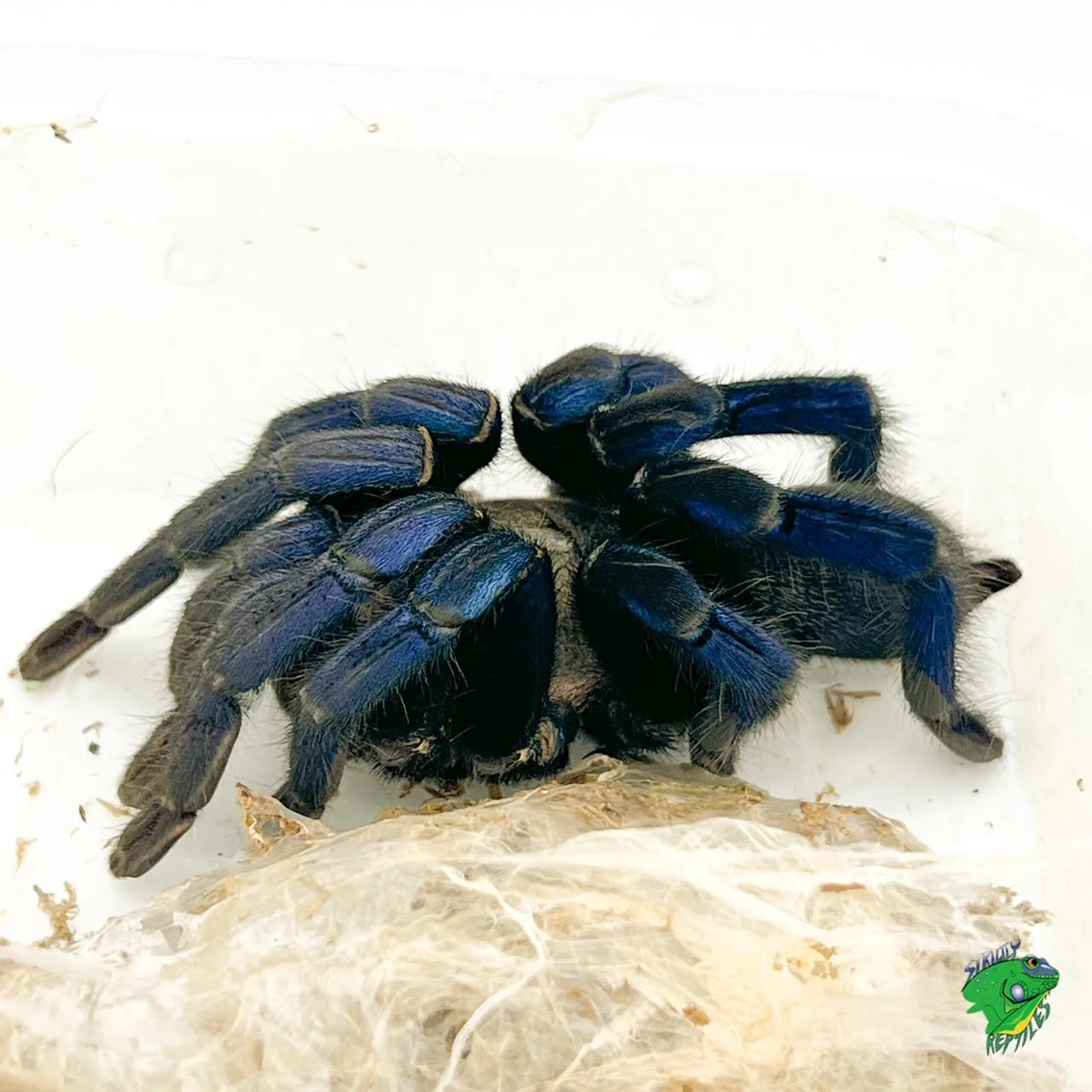Gold Banded Sunburst Tarantula Care [5 Essential Tips]
The Gold Banded Sunburst Dwarf Tarantula (Cyriocosmus elegans) is a captivating species, known for its striking appearance and relatively manageable size. Caring for these delicate creatures requires understanding their specific needs to ensure a healthy and thriving life. This guide provides five essential tips for successfully keeping a Gold Banded Sunburst Dwarf Tarantula, covering enclosure setup, environmental conditions, feeding, handling, and overall maintenance. Following these guidelines will provide your tarantula with the best possible environment. Remember, responsible pet ownership begins with diligent research and a commitment to providing the best care possible.
Choosing the Right Enclosure
The enclosure is the foundation of your Gold Banded Sunburst Dwarf Tarantula’s habitat. Selecting the right enclosure is crucial for its well-being and safety. Size, material, ventilation, and security are all critical factors to consider. A properly designed enclosure will not only house your tarantula but also help you maintain the necessary environmental conditions, such as humidity and temperature. Remember to always prioritize the tarantula’s safety, ensuring that the enclosure is escape-proof. This will create a stress-free and secure environment for your pet. The appropriate enclosure will also allow you to easily observe your tarantula and monitor its behavior and health.
Size and Material of the Enclosure
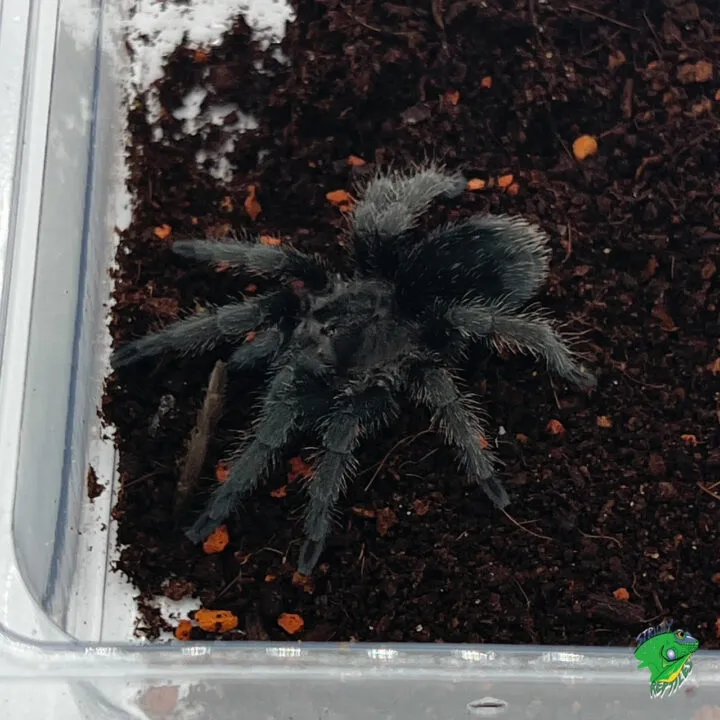
Gold Banded Sunburst Dwarf Tarantulas, being small, do not need large enclosures. A terrarium that is approximately 10x10x8 inches is usually sufficient for an adult. The material can be glass or acrylic; however, glass enclosures are often preferred due to their scratch resistance. Make sure the enclosure is well-ventilated to prevent the buildup of harmful gases and maintain air circulation. A secure lid is essential to prevent escapes, as these tarantulas are quick and can squeeze through small openings. Always consider the adult size of your tarantula to prevent it from becoming cramped.
Ventilation and Security
Adequate ventilation is vital to prevent mold growth and maintain air quality inside the enclosure. Ventilation can be achieved through cross-ventilation, with air holes on opposite sides of the enclosure. The lid should be secure and fit tightly to prevent escapes. Regularly inspect the lid and enclosure for any signs of damage or potential escape routes. Secure the enclosure’s locking mechanisms to avoid any accidents or incidents that may put your tarantula at risk. These measures contribute to a safe and healthy environment.
Setting Up the Substrate
The substrate is the foundation of your tarantula’s habitat, providing a comfortable environment and contributing to humidity regulation. The substrate should mimic the natural environment of the Gold Banded Sunburst Dwarf Tarantula, which is usually a tropical or subtropical habitat. The right substrate promotes burrowing behavior and helps the tarantula feel secure. The depth of the substrate is essential for both burrowing and maintaining humidity. A good substrate setup also helps with waste management, making it easier to clean and maintain the enclosure. By providing the right substrate, you will promote a healthier and more natural habitat for your tarantula.
Best Substrate Options
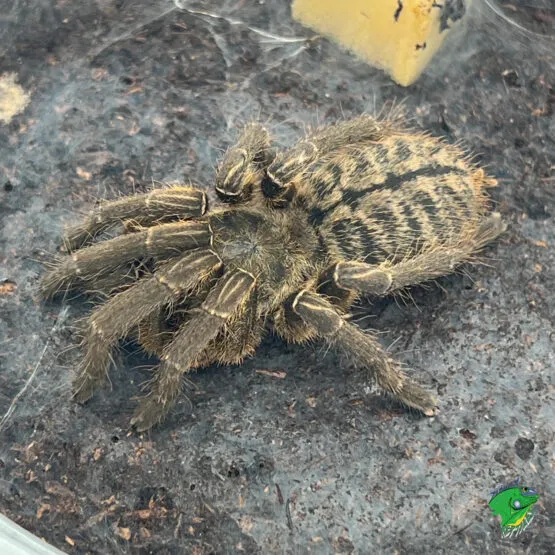
A mixture of substrates often works best. A blend of coco fiber, peat moss, and a bit of vermiculite is excellent for retaining moisture and providing a burrowing medium. You can also add a layer of sphagnum moss on top to help retain humidity. The substrate should be deep enough to allow the tarantula to burrow, typically 2-3 inches. Avoid using substrates with sharp edges or chemicals that could harm your tarantula. Regularly check the substrate for mold or excessive dryness, and replace it as needed to maintain a healthy environment. The right substrate choice will provide your tarantula with the appropriate environment.
Maintaining Humidity and Temperature
Proper humidity and temperature levels are critical to the health of your Gold Banded Sunburst Dwarf Tarantula. These environmental factors directly impact the tarantula’s ability to molt and thrive. Monitoring these parameters with a hygrometer and thermometer is highly recommended. Regular adjustments may be necessary to maintain the ideal environment. An unsuitable environment can cause stress, leading to health problems and, in extreme cases, even death. Consistent attention to the enclosure’s humidity and temperature will provide a healthy and secure environment.
Ideal Temperature Range
The ideal temperature range for a Gold Banded Sunburst Dwarf Tarantula is between 75-80°F (24-27°C). A heat mat placed on the side of the enclosure or a low-wattage heat lamp can help maintain this temperature. Avoid placing the heat source directly under the enclosure, as this can cause the substrate to dry out too quickly and create a risk of overheating. Use a thermometer to regularly monitor the temperature inside the enclosure. Ensure that the temperature does not fluctuate drastically, as this can stress your tarantula. Maintaining the correct temperature is an essential aspect of tarantula care.
Humidity Levels to Maintain
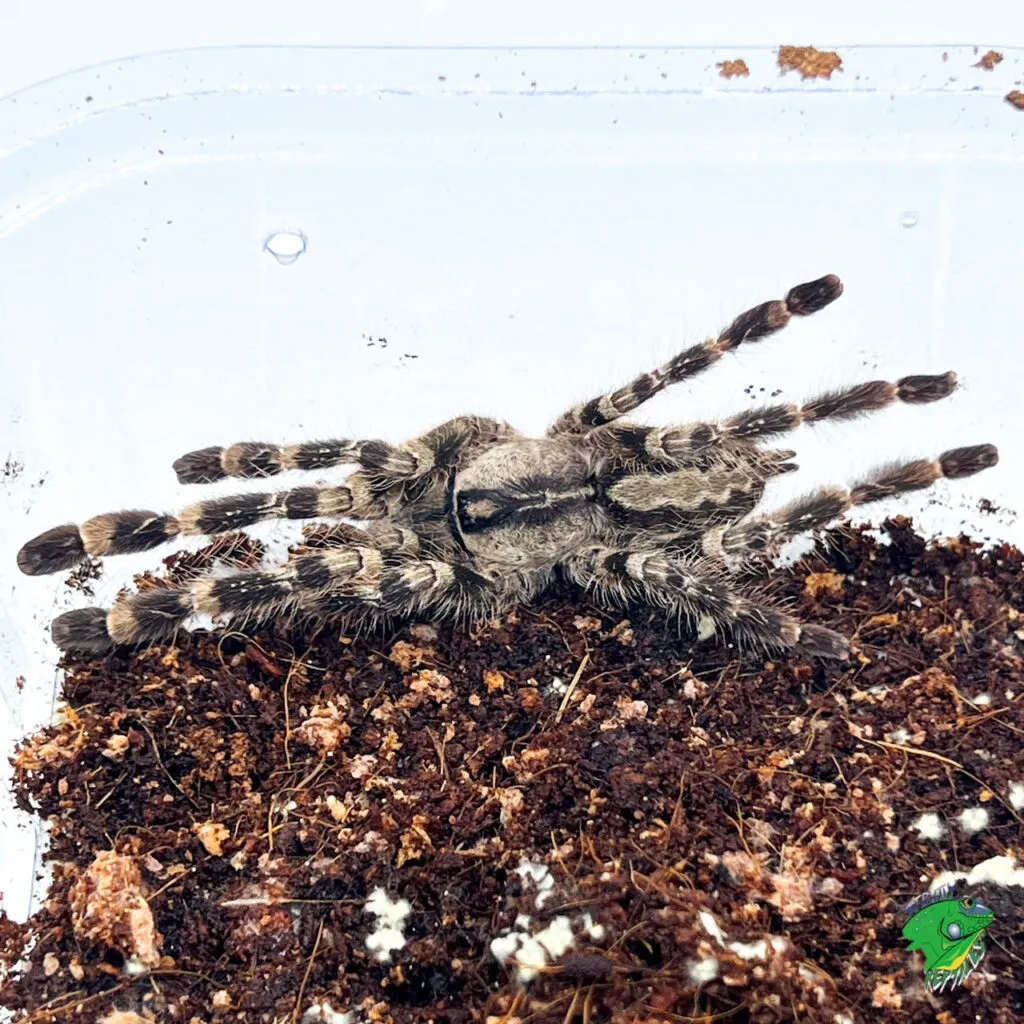
Humidity should be maintained between 65-75%. You can achieve this by misting the enclosure with dechlorinated water every other day or as needed. The frequency of misting depends on your environment and the type of substrate you are using. A hygrometer is essential for monitoring the humidity levels. Avoid over-misting, which can lead to mold growth and other issues. Ensure adequate ventilation to prevent the buildup of excessive moisture. A balanced humidity level is crucial for your tarantula’s molting process and overall well-being.
Feeding Your Gold Banded Sunburst Tarantula
Proper feeding is crucial to ensure the health and longevity of your Gold Banded Sunburst Dwarf Tarantula. These tarantulas are voracious eaters, but overfeeding can lead to health problems. The type, size, and frequency of feeding must be carefully considered. A well-fed tarantula is a healthy tarantula. Always make sure the food source is safe and free from pesticides or other harmful substances. A varied diet and appropriate feeding schedule will keep your tarantula healthy and active. Regularly observe your tarantula’s feeding habits and adjust accordingly.
Appropriate Food Choices
The primary diet for a Gold Banded Sunburst Dwarf Tarantula consists of appropriately sized insects. Crickets, mealworms, and small roaches are all good options. The size of the prey should be no larger than the tarantula’s body. Variety in the diet is beneficial; consider rotating different types of insects. Always gut-load the insects before feeding them to your tarantula. This will provide essential nutrients and vitamins. Avoid feeding wild-caught insects, as they may carry parasites or pesticides. A consistent and balanced diet helps your tarantula thrive.
Feeding Frequency
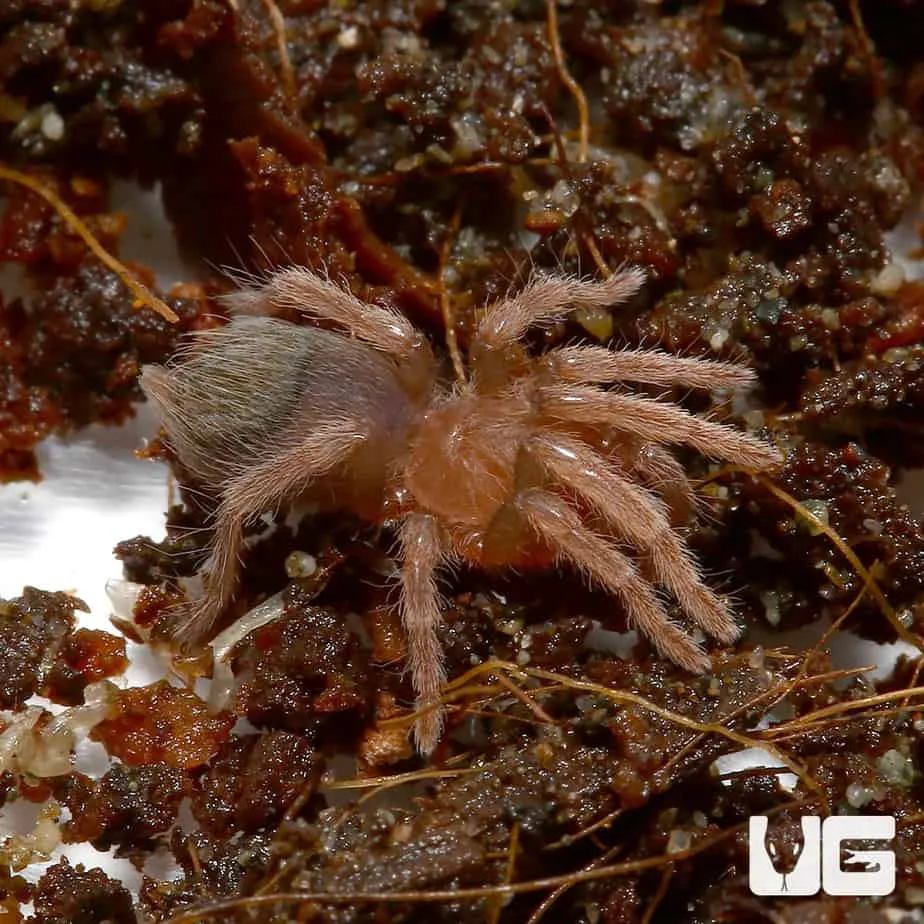
Spiderlings should be fed every other day, while juveniles and adults can be fed once or twice a week. Observe your tarantula’s abdomen; a well-fed tarantula will have a rounded abdomen. If the abdomen is too large, reduce the frequency of feeding. Remove any uneaten prey within 24 hours to prevent stress on the tarantula and the build-up of waste. Always provide fresh water. Adjust the feeding schedule based on the individual tarantula’s needs and molting cycle. Careful observation is key to achieving a balanced diet.
Providing Fresh Water
Fresh water should always be available for your Gold Banded Sunburst Dwarf Tarantula. Provide water in a shallow dish, such as a bottle cap, to prevent the tarantula from drowning. Use dechlorinated water to avoid introducing harmful chemicals. Replace the water regularly to maintain its cleanliness and prevent contamination. The water dish should be easily accessible to the tarantula but not pose a drowning hazard. Regular access to fresh water is crucial for the tarantula’s hydration and overall health.
Handling Your Gold Banded Sunburst Tarantula
Handling a Gold Banded Sunburst Dwarf Tarantula is generally not recommended. While these tarantulas are not as aggressive as some other species, they can still bite if they feel threatened. Their bites are not typically medically significant, but they can be painful. Handling can also stress the tarantula, which can lead to health problems. If you must handle your tarantula, do so with extreme care and respect for its natural behavior. Always wash your hands before and after handling to avoid transferring any substances or contaminants.
Understanding Tarantula Behavior

Understanding your tarantula’s behavior is the key to responsible ownership. Tarantulas are solitary creatures and do not require companionship. Observe your tarantula regularly to understand its individual personality and needs. Signs of stress can include erratic behavior, defensive postures, or refusal to eat. Learn the tarantula’s molting cycle and know when it is preparing to shed its skin. Avoid disturbing your tarantula during molting. Knowledge of your tarantula’s behavior will help you provide the best possible care and maintain a safe and healthy environment.
Safe Handling Techniques
If you need to handle your tarantula, do so gently and with a soft brush or a container. Avoid direct contact with the tarantula’s hairs, as they can be irritating. Never grab or startle the tarantula. Instead, encourage it to move by gently nudging it with a soft brush. Always supervise children when they are near a tarantula. Ensure a safe environment where the tarantula cannot escape. If the tarantula appears agitated, immediately cease handling. Prioritize the tarantula’s comfort and safety over all else.
Cleaning and Maintenance
Regular cleaning and maintenance are essential for maintaining a healthy environment for your Gold Banded Sunburst Dwarf Tarantula. This includes removing waste, replacing the substrate, and cleaning the enclosure. A clean environment reduces the risk of disease and parasites. A consistent cleaning schedule ensures the health and well-being of your tarantula. Regular maintenance also helps you monitor your tarantula’s health and behavior, allowing you to identify any potential problems early on. Cleaning should be done regularly and systematically, as part of a responsible pet care routine.
Regular Cleaning Schedule
Remove any uneaten food and fecal matter regularly, ideally every few days. Spot-clean the enclosure as needed to remove any visible waste. The substrate should be partially replaced every few months, and the enclosure should be fully cleaned and disinfected every 6-12 months or as needed. Avoid using harsh chemicals or cleaning products. Always use a reptile-safe disinfectant and rinse thoroughly. Regular maintenance maintains a healthy environment for your tarantula and minimizes the risk of diseases or infestations.
Health and Wellness Checks
Perform regular health checks on your tarantula to monitor its overall condition. Look for signs of illness or injury, such as lethargy, loss of appetite, or unusual behavior. Inspect the tarantula’s body for any parasites, mites, or other issues. If you notice any problems, consult with a veterinarian experienced with arachnids. Regular inspections and health assessments can lead to early detection of problems, resulting in quick intervention. Early intervention often leads to better outcomes. Responsible pet ownership includes routine health and wellness checks.
Caring for a Gold Banded Sunburst Dwarf Tarantula can be a rewarding experience. By following these tips, you can provide a safe, healthy, and enriching environment for your pet. Remember that patience, observation, and consistent care are key to the tarantula’s well-being. These guidelines will help you to properly care for your tarantula. Always do thorough research and be prepared to adapt to your tarantula’s specific needs. Enjoy your unique pet and the fascinating world of arachnids.
